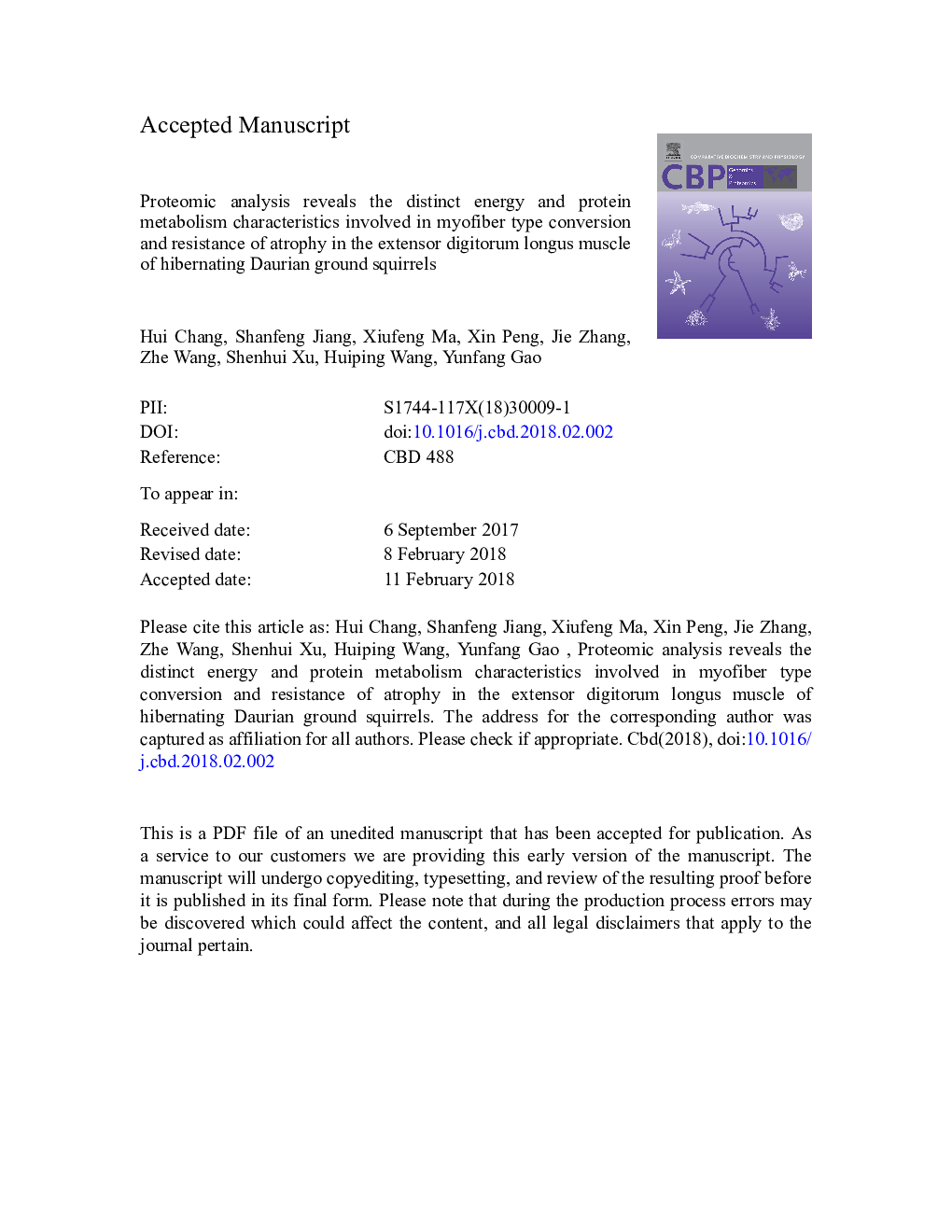| Article ID | Journal | Published Year | Pages | File Type |
|---|---|---|---|---|
| 8319252 | Comparative Biochemistry and Physiology Part D: Genomics and Proteomics | 2018 | 31 Pages |
Abstract
Previous hibernation studies demonstrated that such a natural model of skeletal muscle disuse causes limited muscle atrophy and a significant fast-to-slow fiber type shift. However, the underlying mechanism as defined in a large-scale analysis remains unclarified. Isobaric tags for relative and absolute quantification (iTRAQ) based quantitative analysis were used to examine proteomic changes in the fast extensor digitorum longus muscles (EDL) of Daurian ground squirrels (Spermophilus dauricus). Although the wet weights and fiber cross-sectional area of the EDL muscle showed no significant decrease, the percentage of slow type fiber was 61% greater (Pâ¯<â¯0.01) in the hibernation group. Proteomics analysis identified 264 proteins that were significantly changed (ratioâ¯<â¯0.83 or >1.2-fold and Pâ¯<â¯0.05) in the hibernation group, of which 23 proteins were categorized into energy production and conversion and translation and 22 proteins were categorized into ribosomal structure and biogenesis. Along with the validation by western blot, MAPKAP kinase 2, ATP5D, ACADSB, calcineurin, CSTB and EIF2S were up-regulated in the hibernation group, whereas PDK4, COX II and EIF3C were down-regulated in the hibernation group. MAPKAP kinase 2 and PDK4 were associated with glycolysis, COX II and ATP5D were associated with oxidative phosphorylation, ACADSB was associated with fatty acid metabolism, calcineurin and CSTB were associated with catabolism, and EIF2S and EIF3C were associated with anabolism. Moreover, the total proteolysis rate of EDL in the hibernation group was significantly inhibited compared with that in the pre-hibernation group. These distinct energy and protein metabolism characteristics may be involved in myofiber type conversion and resistance to atrophy in the EDL of hibernating Daurian ground squirrels.
Related Topics
Life Sciences
Biochemistry, Genetics and Molecular Biology
Biochemistry
Authors
Hui Chang, Shanfeng Jiang, Xiufeng Ma, Xin Peng, Jie Zhang, Zhe Wang, Shenhui Xu, Huiping Wang, Yunfang Gao,
